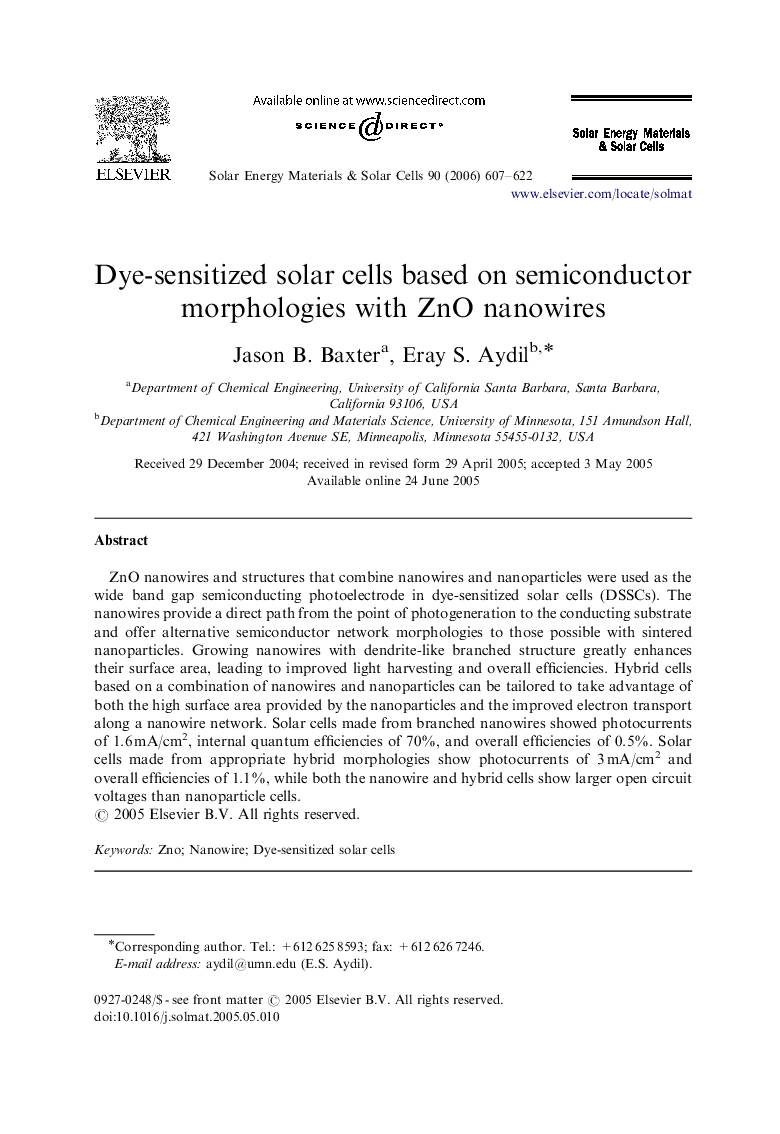| کد مقاله | کد نشریه | سال انتشار | مقاله انگلیسی | نسخه تمام متن |
|---|---|---|---|---|
| 81276 | 49450 | 2006 | 16 صفحه PDF | دانلود رایگان |

ZnO nanowires and structures that combine nanowires and nanoparticles were used as the wide band gap semiconducting photoelectrode in dye-sensitized solar cells (DSSCs). The nanowires provide a direct path from the point of photogeneration to the conducting substrate and offer alternative semiconductor network morphologies to those possible with sintered nanoparticles. Growing nanowires with dendrite-like branched structure greatly enhances their surface area, leading to improved light harvesting and overall efficiencies. Hybrid cells based on a combination of nanowires and nanoparticles can be tailored to take advantage of both the high surface area provided by the nanoparticles and the improved electron transport along a nanowire network. Solar cells made from branched nanowires showed photocurrents of 1.6 mA/cm2, internal quantum efficiencies of 70%, and overall efficiencies of 0.5%. Solar cells made from appropriate hybrid morphologies show photocurrents of 3 mA/cm2 and overall efficiencies of 1.1%, while both the nanowire and hybrid cells show larger open circuit voltages than nanoparticle cells.
Journal: Solar Energy Materials and Solar Cells - Volume 90, Issue 5, 23 March 2006, Pages 607–622